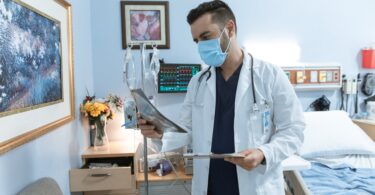
Medical Devices All Surgeons Need
In the landscape of modern medicine, surgical procedures have become increasingly advanced and intricate. Surgeons are heavily reliant on a wide array of medical devices to ensure accurate diagnosis, precise interventions, and optimal patient outcomes.
These devices have revolutionized the field of surgery, enabling surgeons to perform complex procedures with greater efficiency and safety. Thanks to platforms like AcuityMD, practices can connect with sales representatives offering the latest and greatest in medical tech.
In this article, we will delve into eight essential medical devices that every surgeon needs to have at their disposal.
1. Surgical Microscopes
Surgical microscopes are indispensable tools that provide high-resolution magnification, illuminating the surgical field with exceptional clarity. These devices allow surgeons to perform delicate procedures with precision, minimizing tissue damage and reducing the risk of complications.
Microscopes are particularly crucial in neurosurgery, ophthalmology, and microvascular surgery, where intricate structures demand an unparalleled level of visibility. Surgeons rely on surgical microscopes to navigate challenging anatomical landscapes and ensure the most accurate outcomes possible.
2. Laparoscopic Instruments
Laparoscopy, a minimally invasive surgical technique, has revolutionized various surgical procedures. Laparoscopic instruments include cameras, fiber-optic cables, and specialized tools that enable surgeons to access internal organs through small incisions.
These instruments provide real-time visuals of the surgical site, allowing surgeons to manipulate instruments remotely. Laparoscopy reduces patient trauma, shortens recovery times, and lowers the risk of infection compared to traditional open surgeries.
Surgeons proficient in using laparoscopic instruments can perform procedures such as cholecystectomy, appendectomy, and hysterectomy with greater precision.
3. Electrocautery Devices
Electrocautery devices are critical tools that aid in hemostasis and tissue dissection. These devices use electrical currents to cut through tissues and coagulate blood vessels, minimizing bleeding during surgery.
Surgeons employ electrocautery devices to achieve precise incisions, control bleeding, and reduce the risk of postoperative complications. Their ability to achieve both cutting and coagulation in one device streamlines surgeries and enhances patient safety.
4. Ultrasound Machines
Ultrasound technology has extended its reach beyond diagnostic imaging, finding a pivotal role in surgical procedures. Surgeons now use portable ultrasound machines during procedures to visualize internal structures in real time.
These devices help guide needle insertions, locate tumors, and ensure accurate placement of medical devices like catheters and drainage tubes. In cardiac surgery, ultrasound aids in assessing heart function and identifying valve abnormalities.
Surgeons benefit from the immediacy and accuracy of ultrasound imaging, enhancing their ability to make informed decisions during complex surgeries.
5. Surgical Robots
In recent years, surgical robots have emerged as game-changing medical devices, enhancing the capabilities of surgeons across various specialties. These robotic systems offer enhanced dexterity, precision, and stability, enabling surgeons to perform intricate procedures with minimal invasiveness.
Surgeons control the robotic arms from a console, translating their hand movements into precise actions by the robot. Surgical robots have been particularly valuable in fields like urology, gynecology, and cardiovascular surgery.
6. Intraoperative Imaging Systems
Intraoperative imaging systems play a crucial role in guiding surgeons during complex procedures. These devices, such as intraoperative CT scanners and MRI machines, provide real-time images of the surgical site, allowing surgeons to assess the progress of their interventions.
Intraoperative imaging helps ensure that surgeons achieve their intended outcomes by confirming the accuracy of placements, alignments, and corrections. This technology is particularly vital in neurosurgery and orthopedic surgery, where precision is paramount and even the slightest adjustments can significantly impact patient outcomes.
7. Hemostatic Agents and Sealants
While not traditional medical devices, hemostatic agents and sealants are essential tools that surgeons rely on to control bleeding and promote wound healing. These agents come in various forms, such as powders, gels, and patches, and they help enhance the body’s natural clotting mechanisms.
Surgeons use them to control bleeding during procedures, particularly in situations where sutures alone might not be sufficient. Hemostatic agents and sealants are especially valuable in surgeries involving major blood vessels, liver resections, and trauma cases, where rapid and effective hemostasis can be life-saving.
8. Endoscopic Cameras and Instruments
Endoscopic cameras and instruments have become invaluable tools in various surgical specialties, enabling surgeons to visualize and operate within cavities and organs through small incisions.
These devices consist of flexible tubes with attached cameras and tools, allowing surgeons to navigate and perform procedures in hard-to-reach areas of the body. Endoscopic procedures, also known as minimally invasive surgery, offer reduced scarring, faster recovery times, and less postoperative pain for patients.
Innovations Shaping Surgical Excellence
As technology continues to push the boundaries of possibility, surgeons are equipped with an expanding arsenal of tools that enable them to address even the most intricate challenges.
Use this technology to reshape the landscape of surgical excellence, ultimately improving the quality of care and the lives of countless patients worldwide.






